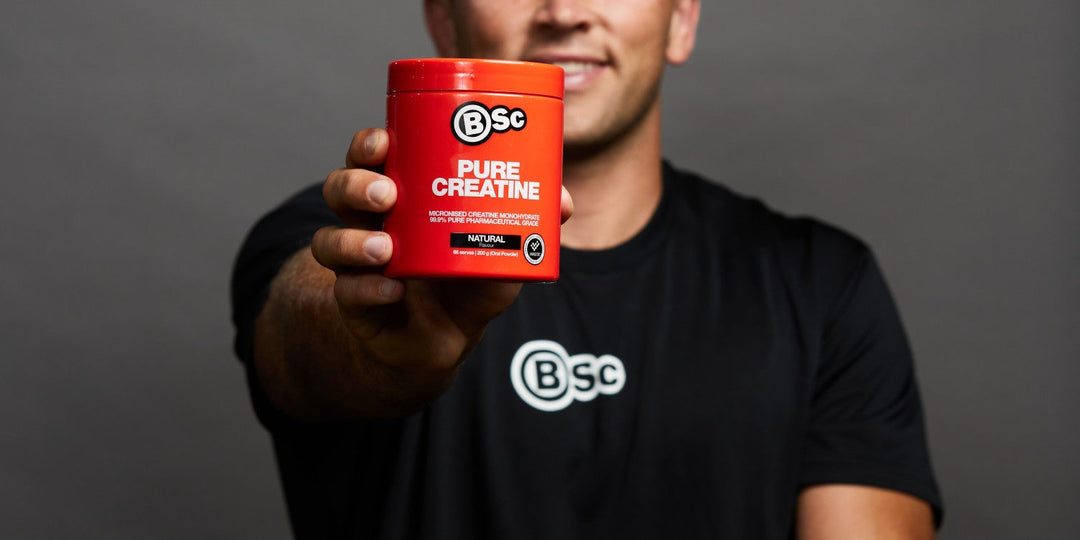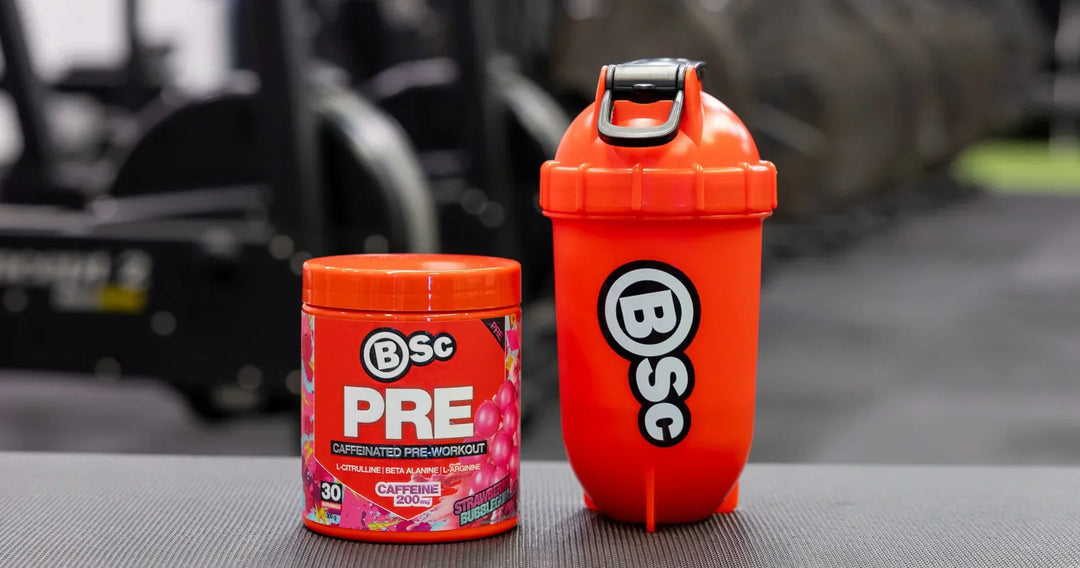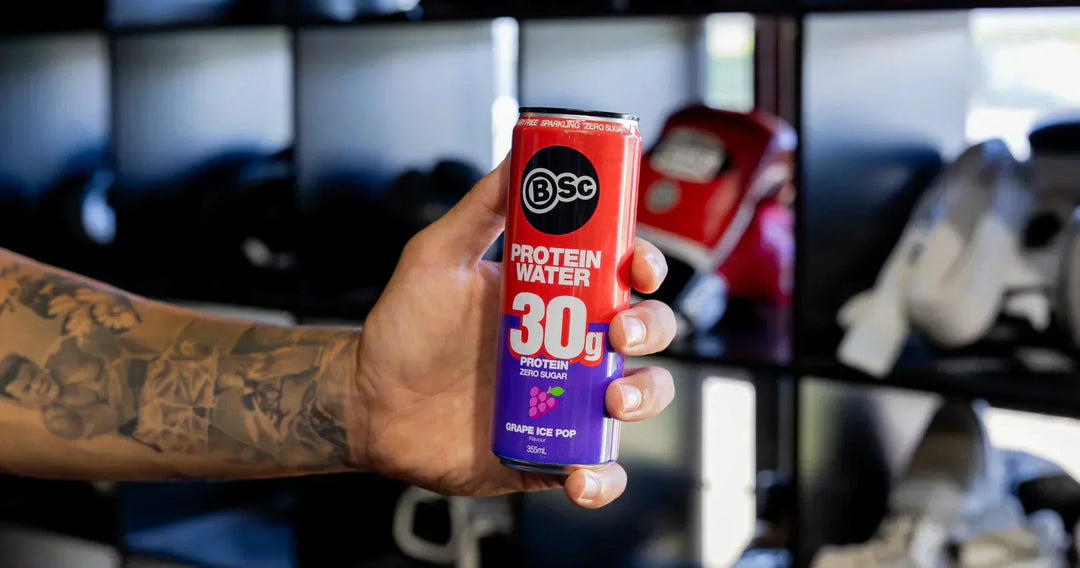Author | The BSc Experts

You’ve probably heard it before, “Training is the realisation of one's genetic potential”. But, in order to truly push the limits, you must look beyond the most commonly talked about contributors to your progress (usually diet and exercise) and see where you can capitalise on broader areas of your training, performance and recovery….
Targeted compression technology, please enter stage right. From faster recovery to the enhanced athletic performance they’re an unsung hero of many elite athletes that anyone serious about their training and progress should be taking advantage of. This week, let's cover recovery. Look out for next weeks article on compression and performance enhancement.
Sports scientists are constantly discovering new ways to take human athletic performance to the next level. Compression garments represent a way of safely and legally manipulating human physiology to produce an internal environment that is more conducive to high performance and faster recovery. The science behind compression garments is not new and compression garments have been used clinically for many years to treat venous insufficiency, edema and prevent deep vein thrombosis in postoperative patients. However, it has not been until more recently that the positive effects in training populations have been discovered.
Ok, so what is meant by graded compression?
While they may look very similar to the basic tights that were popular in the ’80s but there is far more physiology behind compression garments than meets the eye.
Why should I not just wear any old tights? Simple, faster recovery!
Muscle damage is an inevitable consequence of your high-intensity exercise and any technique that can facilitate muscle repair and faster recovery is of large benefit to us all. A study in elite Rugby Union players reported that compression garments worn immediately after a rugby match significantly reduced markers of muscle damage (creatine kinase) compared to passive recovery at 36 and 84 hours post-match (8).
Graded (or graduated) compression means that the compression exerted by the garments differs over a given distance. If long lower body garments are used as an example, compression at the ankle and calf is higher than at the thigh. This facilitates the flow of blood through the deep veins back towards the heart. This increase in blood flow and venous return to the heart is one of the reasons why compression garments are used in clinical applications such as the prevention of deep vein thrombosis post-surgery.
What is this training compression technology?
Our compression design targets muscle groups via panels and seams so compression is applied to individual targeted muscle groups. This technology means the garment moves with the targeted muscle groups in flexion and extension. So unlike cheap colourful tights, we enclose each muscle region like a muscle sheath, with graded compression & the added benefit of strengthening and providing support to the targeted muscle groups.
Some companies quote the pressure exerted by their garments, is this accurate?
The truth is that there is no globally accepted methodology to measure the compression that commercially available compression garments provide. This is why many manufacturers will quote compression data without indicating the methodology they used to measure it. Compression data means nothing if the method used cannot be proven to be reliable and valid. Furthermore, the compression exerted will depend on the individual wearing the garment. Anthropometric measurements differ greatly between individuals and even two individuals with the same height and weight can vary greatly in limb girths. So when companies give a single reading for the compression provided at the ankle, calf and thigh, these readings likely only apply to a single person and if anyone else tried on the same compression garment the pressures would not be identical. So don’t get caught up in the marketing. We know our garments make a difference because they have been used by the best athletes at the highest level of sport, since 2004.

The big Q is will compression garments reduce delayed onset muscle soreness (DOMS)?
We know delayed onset muscle soreness (DOMS) occurs in the days following intense sport running, HIIT sessions or novel activities and symptoms can range from muscle tenderness to severe debilitating pain (5).
Research has indicated that compression garments can reduce both the severity of DOMS and recovery time following eccentric muscle damage.
Prove it, ok. In a clinical trial, Kraemer and co-workers (12) induced delayed onset muscle soreness through an eccentric resistance training protocol in 20 female participants. Immediately after the muscle-damaging protocol, the women were divided into two groups, one group wore a compression garment for 5 days while the other group received no treatment. The results indicated that compression garments facilitated the recovery of muscle strength and power and resulted in significantly less perceived muscle soreness. Interestingly on day 5, the group receiving no treatment had a 2-3cm increase in upper arm circumference attributed to swelling, while the compression garment group had no swelling at all.
More recently a study was conducted in which subjects performed downhill walking with one leg covered by a compression garment while the other leg remained uncovered and acted as a control. The participants were then carefully monitored the 48 hours after the exercise trial. The scientists conducting the study concluded that the compression garment accelerated the inflammatory and repair timeframe within the muscle (17). This could explain why compression garments have previously been reported to facilitate more rapid recovery of performance following soft tissue damage.
Not convinced, is there any research to suggest that compression garments can facilitate recovery in the hours following intense exercise?
One study investigated the effect of compression garments on recovery between two maximal exercise tests. The study investigated the effect of wearing compression garments during an 80 minute recovery period separating two all-out 5-minute maximal cycle tests. The results indicated that the compression garments facilitated recovery and that performance on the second 5-minute cycle test was superior after wearing compression garments during the recovery period. Specifically, the difference between wearing and not wearing compression garments during recovery corresponded to a 2.1% difference in performance (4).
I’m getting a little more excited, so is there any research to suggest that compression garments could facilitate recovery in shorter periods of time such as a couple of minutes?
In recent times compression garments have become popular in many field-based sports such as rugby league, rugby union, soccer and AFL. These sports require a fitness component termed “repeated sprint ability” or “RSA”. RSA is basically the capacity to perform multiple high-intensity sprints with brief recoveries over an extended period of time. Many athletes who wear compression garments during training and competition perceive that compression garments allow them to recover more quickly between high-intensity efforts and subsequently perform repeated sprints at a higher intensity. That’s why you often see athletes training in the athletic longs or simply using for a run.
Enhanced repeated sprint ability would certainly be of benefit to athletes in field-based sports, however, at this point, no research has specifically investigated the potential of compression garments under such conditions. Sprints in field-based sports are generally short and performed at a high frequency with very brief recoveries. They also involve rapid accelerations, decelerations and changes in direction. Given that compression garments have been reported to positively influence blood lactate concentrations, reduce muscle oscillation and enhance muscle proprioception then it would seem that there are certainly physiological mechanisms by which compression garments have the potential to enhance repeated sprint ability in field-based sports.
And finally, is wearing compression garments as effective as other recovery techniques?
In an attempt to facilitate post-exercise recovery, many athletes and teams implement recovery strategies such as contrast water therapy and low-intensity active exercise protocols. However, sometimes it is not possible to implement such strategies and compression garments represent a passive recovery technique that is simple and convenient. In a recent study recovery after a rugby match was compared when four different recovery techniques were implemented (5). The four techniques included compression garments, contrast water therapy, low-intensity active exercise and passive recovery. Creatine Kinase, an enzyme that provides an indication of muscle damage was measured before, immediately after, and at 36 and 84 hours post-match. Results indicated that compression garments, contrast water therapy and low-intensity active exercise enhanced CK clearance more than passive recovery. This study illustrates that compression garments are as effective as many other popular recovery techniques while offering the advantage of being more convenient under certain conditions (e.g. away games).
So there you have it, stay with those regular tights that don’t have your goals and performance in mind, or discover your true genetic potential.
References
1. Berry, M.J. McMurray, R.G. Effects of graduated compression stockings on blood lactate following an exhaustive bout of exercise. American Journal of Physical Medicine. 66:121-132, 1987
2. Bringard, A. S. Perrey, N. Belluye. Aerobic Energy Cost and Sensation Responses During Submaximal Running Exercise - Positive Effects of Wearing Compression Tights Int J Sports Med. 27:373-378, 2006.
3. Caraffa, A., Cerulli, G., Projetti, M., Aisa, G., Rizzo, A. Prevention of anterior cruciate ligament injuries in soccer. Knee surgery, sports traumatology, arthroscopy) 4:19-21, 1996.
4. Chatard, J.C. Atlaoui, D., Farjanel, J. Louisy, F. Rastel, D. Guezennec, C.Y. Elastic stockings, performance and legpain recovery in 63-year-old sportsmen. European Journal of Applied Physiology. 93:347-352, 2004.
5. Cheung, K. Hume, P. Maxwell, L. Delayed onset muscle soreness : treatment strategies and performance factors. Sports Medicine. 33:145-164, 2003.
6. Cook, D.B., O'Connor, P.J. Eubanks, S.A. Smith, J.C. Lee, M. Naturally occurring muscle pain during exercise: assessment and experimental evidence. Medicine & Science in Sports & Exercise. 29:999-1012, 1997.
7. Doan, B.K., Kwon, Y.H. Newton, R.U. Shim, J. Popper, E.M. Rogers, R.A. Bolt, L.R. Robertson, M. Kraemer, W.J. Evaluation of a lower-body compression garment. Journal of Sports Sciences. 21:601-610, 2003.
8. Gill, N.D. Beaven, C.M. and Cook, C. Effectiveness of post-match recovery strategies in rugby players British Journal of Sports Medicine. 40:260-263, 2006.
9. Kraemer, W.J., Bush, J.A., Bauer, J.A., Triplett-McBride, N.T., Paxton, N.J., Clemson, A., Koziris, L.P., Mangino, L.C., Fry, A.C., Newton, R.U. Influence of compression garments on vertical jump performance in NCAA Division I volleyball players. Journal of strength and conditioning research 10:180-183, 1996.
10. Kraemer, W.J., Bush, J.A., Triplett-McBride, N.T., Koziris, L.P., Mangino, L.C., Fry, A.C., McBride, J.M., Johnston, J., Volek, J.S., Young, C.A., Gomez, A.L., Newton, R.U. Compression garments: influence on muscle fatigue. Journal of strength and conditioning research 12: 211-215, 1998
11. Kraemer, W.J., Bush, J.A., Newton, R.U., Duncan, N.D., Volek, J.S., Denegar, C.R., Canavan, P., Johnston, J., Putukian, M., Sebastianelli, W.J. Influence of a compression garment on repetitive power output production before and after different types of muscle fatigue. Sports medicine, training and rehabilitation 8:163-184, 1998
12. Kraemer, W.J., Bush, J.A., Wickham, R.B., Denegar, C.R., Gomez, A.L., Gotshalk, L.A., Duncan, N.D., Volek, J.S., Putukian, M., Sebastianelli, W.J. Influence of compression therapy on symptoms following soft tissue injury from maximal eccentric exercise. The journal of orthopaedic & sports physical therapy 31: 282-290, 2001.
13. Lambert, S. A crossover trial on the effects of graded compression garments exercise and recovery. Journal of Science and Medicine in Sport. 8:S222, 2005.
14. McComas, A.J. Skeletal Muscle: Form and Function. Champaign, IL, Human Kinetics. 1996.
15. Parkkari, J. Kujala, U.M. Kannus, P. Is it possible to prevent sports injuries? Review of controlled clinical trials and recommendations for future work. Sports Medicine. 31:985-995, 2001.
16. Powers, S.K. and Howley, E.T. Exercise Physiology: Theory and Application to Fitness and Performance. McGraw-Hill, USA. 1998.
17. Trenell, M.I. Rooney, K.B. Sue, C.M. and Thompson, C.H. Compression garments and recovery from eccentric exercise: A 31P-MRS study. Journal of Sports Science and Medicine. 2006 5: 106-114.



